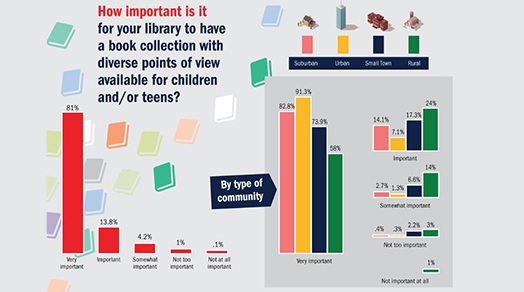
Welcoming Diversity in the Classroom is a must in our classrooms! Teachers, especially those in Teaching Jobs in UAE, know the importance of representing the world through learning materials. One of the easiest yet most effective ways to do this is by creating a varied classroom library. A balanced library shares education and also links our students to the diverse world around them and that is remarkable.
As educators, we shape the future of our students and arguably one of the most powerful ways to shape their outlook is to introduce them to literature that commemorates various backgrounds, cultures and experiences. In this blog we will explore some ideas to help you get started building a classroom library that embraces diversity and inclusion.
5 Strategies for Building an Inclusive Library
Here are 5 effective strategies for building an inclusive library that fosters diversity, promotes equity, and supports every student's learning journey:
1. Make Use of What You Have
You may not have a design budget or multiple images, and that is fine! The first task is to to make an inventory out of the books already sit in your classroom, and simply use whatever you find.
Here's where you can begin:
Do you have books that represent various cultures, ethnicities, and experiences? Do they highlight a variety of genders, experiences, and abilities? If yes, then you are sorted!
If many books have been written by the same author or authors, see if you can find books that bring a new experience.
These two aspects are equally important! Balancing fiction and non-fiction will give students the opportunity to imagine new contexts while learning about real-world experiences.
You may be surprised at what meaningful change creating an inclusive space can involve, and any small changes can make an even bigger impact!
2. Involve Your Students
There is a lot of emphasis on building a well-stacked library, but simply thinking about what is important is not enough; you also need to think about what your students need. Involving your students in the process also offers positive residual effects.
Here are some ways to involve your students:
Ask your students what they are interested in, either through informal discussions or surveys. Ask what books they want to see in the classroom. This may help form the base of your library and what they prefer.
Set up a suggestion box. Students could write down the name of a book with reasons why they would like to read it.
Get students to successfully start a student-led book club. Engaging with diverse books (in a group) can develop a sense of ownership and connection.
When learners see their likenesses represented in the library, it helps them engage and feel they belong in the classroom.
3. Select Stories that Students Can Relate To
Selecting stories that remind students of their own experiences helps them relate to the books. Books that showcase commonalities in characters, context, or themes with students culturally personalize their reading, but here are some things to remember as you self-select stories for students to read.
To provide your students with texts that include characters from multiple cultural, ethnic, or socio-economic perspectives, not just the experience of a character similar to the reader. You should also provide texts that present shared themes such as friendship, adaptability, overcoming adversity, and self-empowerment.
Ensure that both male and female protagonists are featured in a variety of genders- heroes, leaders, inventors, etc.
Consider including books that represent characters with disabilities, physical, emotional, and cognitive differences.
When students see themselves and others as characters, fiction fosters empathy, as well as understanding themselves and the social world better than they could have otherwise.

4. Keep the Momentum Going
Building a composite library is really only step one; if you want to maximize its effect on student lives, you must maintain that momentum through the school year.
How to keep students engaged?
Continue to add new books to the library to keep students interested and expose them to another new concept and point of view.
Pick a theme for the month; it could be ‘Women in History’ or ‘Exploring the World's Different Cultures’; and with that in mind, coordinate the addition of books for that purpose.
Celebrate authors from all background-occasions, giving them a platform to promote regardless of their fame or lack thereof.
Fresh content from time to time will keep your students engaged and excited about reading.
5. Student Engagement and Self-Esteem
A diverse library can provide more behind the engagement: it can foster self-esteem in the students and also help form a more welcoming environment within the classroom.
Why it matters:
If students view books that in some way depict their own experiences and background, they tend to feel more included and will respond more in class activities.
A diverse collection helps students establish a better sense of their own identity and their position in the world.
As students read about characters from other cultural backgrounds, they will enhance their understanding and respect toward other people's cultures and experiences.
The key backbreaking act for your students to clasp is whether through these books they will be able to stand academically and emotionally in the real world.
Bottom Line:
If you are a teacher looking for strategies to create a more diverse classroom, you should try taking the Teacher Training Courses in UAE as they are tailored to help teachers put theory into practice. These courses equip educators with the skills and approaches necessary for addressing the learning challenges of students.
Moreover, other Teaching Management and Administration programs help some school managers acquire skills on how to manage diverse classrooms. Teachers have to keep up with the changing methodologies in teaching and learning, and training programs help sustain the inclusion and interactivity of their classrooms. These will aid you in becoming a more effective and impactful educator.